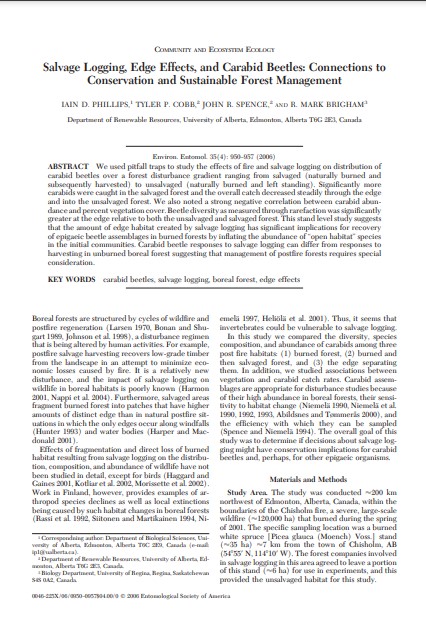Salvage Logging, Edge Effects, and Carabid Beetles: Connections to Conservation and Sustainable Forest Management
Bosque Modelo:
Foothills
Temática:
Gestión forestal
Tipo de documento:
Artículo científico
Resumen
We used pitfall traps to study the effects of Þre and salvage logging on distribution of carabid beetles over a forest disturbance gradient ranging from salvaged (naturally burned and subsequently harvested) to unsalvaged (naturally burned and left standing). SigniÞcantly more carabids were caught in the salvaged forest and the overall catch decreased steadily through the edge and into the unsalvaged forest. We also noted a strong negative correlation between carabid abundance and percent vegetation cover. Beetle diversity as measured through rarefaction was signiÞcantly greater at the edge relative to both the unsalvaged and salvaged forest. This stand level study suggests that the amount of edge habitat created by salvage logging has signiÞcant implications for recovery of epigaeic beetle assemblages in burned forests by inßating the abundance of “open habitat” species in the initial communities. Carabid beetle responses to salvage logging can differ from responses to harvesting in unburned boreal forest suggesting that management of postÞre forests requires special consideration.
Información Bibliográfica
Autor:
Phillips, I, T Cobb, J Spence, R Brigham.
Revista:
Environmental Entomology
Año:
2006
N°:
4
País :
Canadá
Páginas:
481 - 488
Volumen:
17
Idioma:
Ingles
Palabras claves
carabid beetles, salvage logging, boreal forest, edge effects





